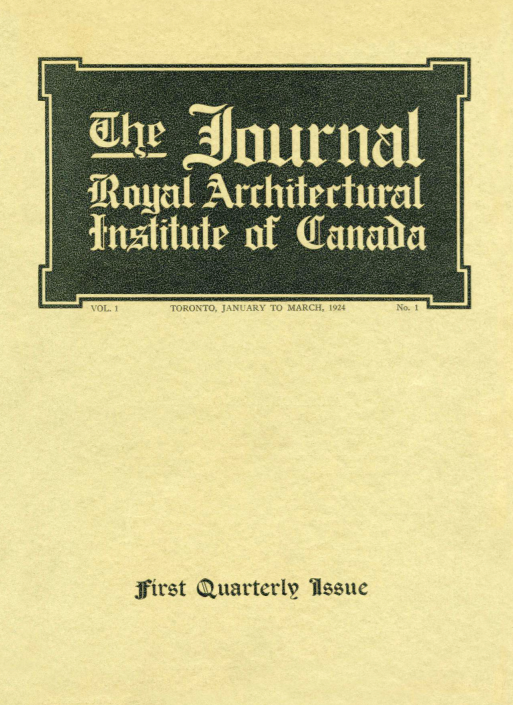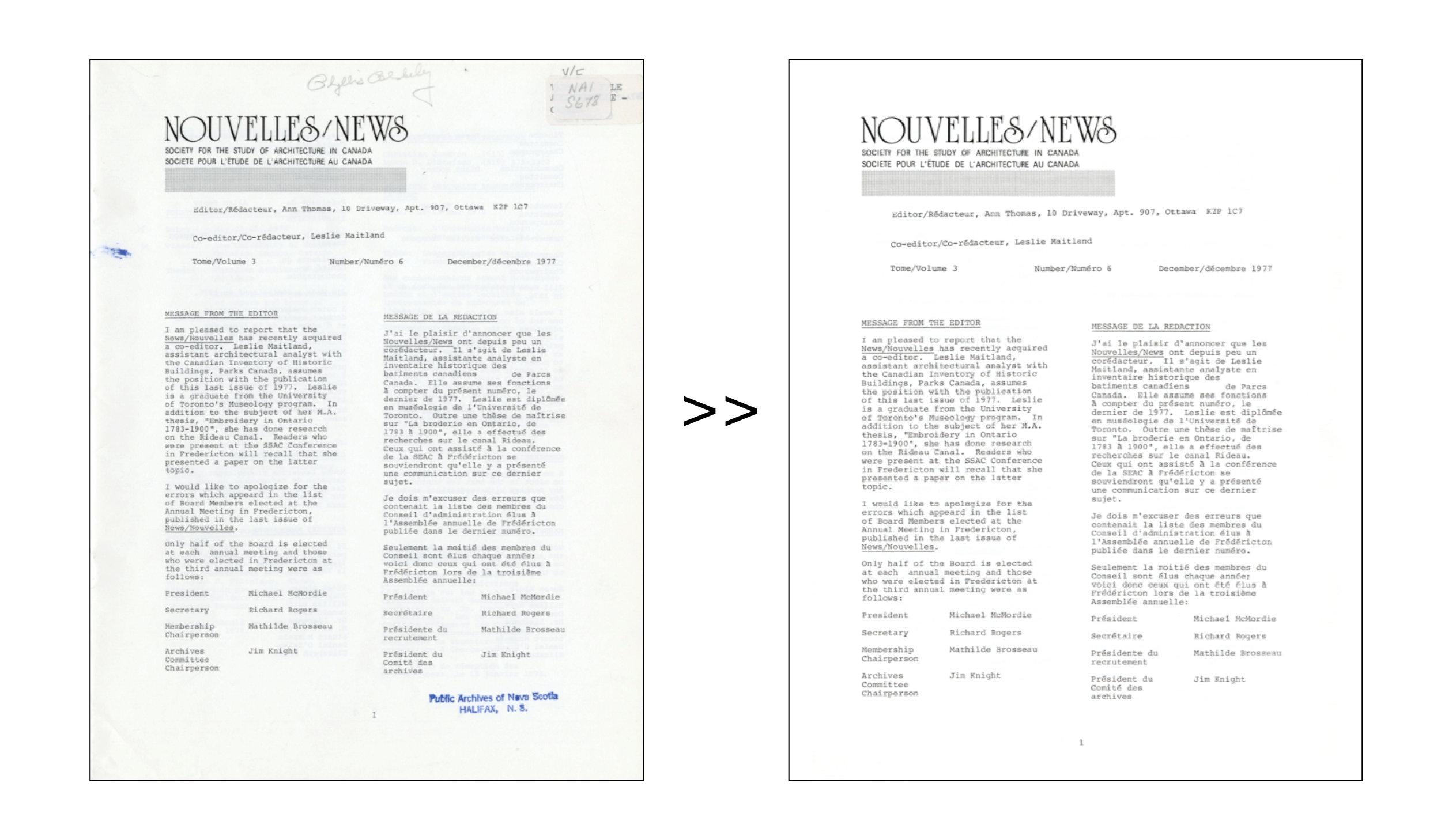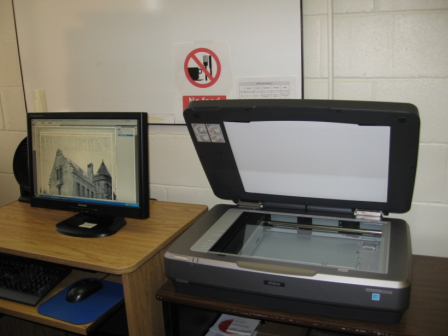AASL Column, October 2018
Lucy Campbell and Barbara Opar, column editors
Column by Allison Fulford, Architecture Librarian, Dalhousie University Libraries, Dalhousie University Halifax, NS Canada
It is incredible what can be accomplished when circumstances demand novel solutions, creativity, and perseverance. In 2008, a staffing reorganization at Dalhousie University’s Sexton Design & Technology Library, prompted the creation of a Digitization Team. Though most Team members had no related experience, their transferable skills included attention to detail, and expertise in the procedures of providing access to print and electronic library material.
Coincident with the reorganization was a request from the Society for the Study of Architecture in Canada (SSAC), to digitize the Society’s Journal from 1975 to the present, and to provide access through a freely accessible website. The Journal is bilingual and refereed, covering Canadian architecture from all historical periods and from diverse cultural traditions. The reorganization and this well-timed request from the Society propelled the Team forward into the world of digitization.
But where to start? A digitization infrastructure was needed. The Dalhousie University Archives donated a large flatbed scanner and computer, including the Creative Suite software; the Dalhousie Libraries provided secure file storage space. Through reading and workshop attendance Team members learned the technical aspects of digitization, scanning procedures and specifications, PDF creation, Optical Character Recognition (OCR), and website construction. Trial and error played big roles too, with steps forward and backward.
The Team of six started scanning but soon decided that the resulting scans, though legible, were not all that pretty. A decision was made to ‘clean-up’ each scan. The Team straightened and resized pages, adjusted colours, and removed marks and stamps – a tremendous amount of work that ran from mid-2009 to early 2011. The results were definitely worth the effort and elevated the quality of the entire project. Next, the Team created issue-level PDFs, ran them through OCR software to allow keyword searching, and loaded them on the project website (http://sextondigital.library.dal.ca/jssac/).______________ Launched in 2012, the digitized Journal garnered gratifying feedback from the Society, which boosted Team confidence. This confidence would be necessary as a second, even larger project, soon came along.
Later in 2012, we agreed to digitize the Royal Architectural Institute of Canada’s (RAIC) Journal from 1924 to 1974. The publication offered an important documentary history of the development of architecture and of architectural practices in Canada. What was fundamental in bringing about the collaboration with the RAIC, was the quality of work that the Team had produced on the SSAC’s digital archive.
The vast RAIC project was not one that the Team could undertake on its own – extra staff and funding were needed. With backing from RAIC, a Canada Council for the Arts grant, and support from the University Librarian at Dalhousie, the project could commence.
The Team hired two keen and dedicated School of Information Management students who improved and updated procedures relating to scanned image clean-up in Photoshop. Even so, the project crept along – the volume of work was enormous – not just the scope of the Journal archive, but the length of some issues. Procedures were streamlined and then streamlined even further in an effort to complete the project in a realistic time frame. The Team leader even took a six-month sabbatical in 2016 to devote as much time as possible to the project. After some staff retirements and new work assignments for remaining Team members, clean-up was eventually dropped all together. Project work was finally completed in the summer of 2018. Most PDF issues are on the open access website (http://sextondigital.library.dal.ca/RAIC/index.html), and final issues continue to be added.
We never thought we’d see the end of the RAIC project. Persistence, patience, and adaptability characterized our ten years of experience in the digitization field. With support from the SSAC, the RAIC, the Canada Council, the Dalhousie Libraries, and from colleagues, we succeeded in providing online, open access to two journals significant to the study of architecture in Canada.

 Study Architecture
Study Architecture  ProPEL
ProPEL 


